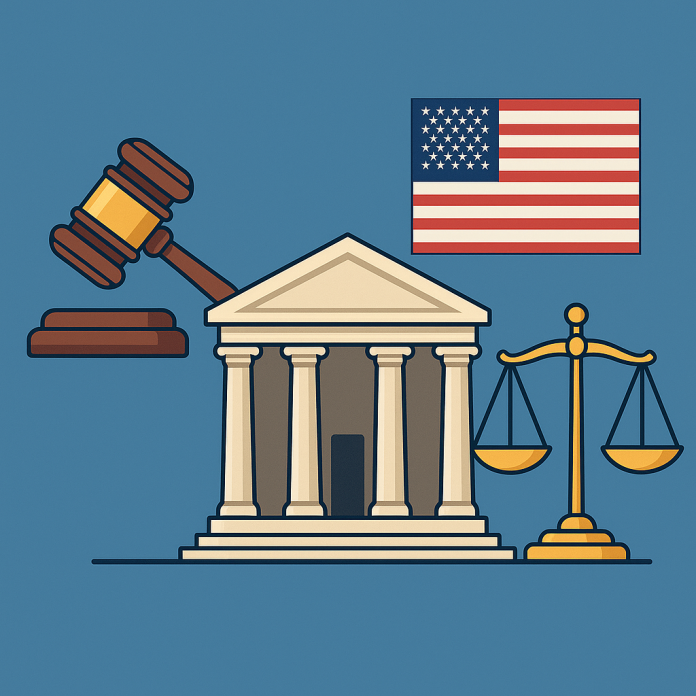The U.S. Supreme Court is the highest court in the United States. Its decisions shape American law, protect constitutional rights, and influence major issues like elections, immigration, technology, healthcare, and civil liberties.
But how does the Supreme Court actually make these decisions?
This simple and detailed guide explains the full process from choosing which cases to hear to writing the final opinions.
⭐ 1. What Is the Supreme Court?
The Supreme Court consists of:
-
9 Justices (1 Chief Justice + 8 Associate Justices)
-
Appointed by the President
-
Confirmed by the Senate
-
Serve for life unless they retire or resign
Their job is to interpret the U.S. Constitution and federal laws.
⭐ 2. The Supreme Court Chooses Which Cases to Hear
The Court receives 7,000–8,000 requests every year but hears only 60–80 cases.
These requests are called “petitions for certiorari” or cert petitions.
✔ What types of cases do they choose?
They usually select cases involving:
-
Constitutional questions
-
Conflicts between lower courts
-
Major national issues
-
Important federal law disputes
-
Civil rights or government powers
✔ How do they choose?
The “Rule of Four” applies:
➡ If 4 out of 9 justices agree to hear a case, the Court accepts it.
⭐ 3. Written Briefs: The Justices Study the Case
Once a case is accepted:
-
Lawyers for both sides submit written legal arguments (briefs).
-
Outside groups businesses, states, or organizations can send amicus curiae briefs (“friend of the court” briefs).
-
Justices and their law clerks study all arguments, evidence, and constitutional history.
Briefs often include:
-
Facts of the case
-
Legal principles
-
Precedents (past court decisions)
-
Constitutional interpretation
This stage may take months.
⭐ 4. Oral Arguments: Lawyers Present Their Case in Court
After reviewing the briefs, the Court schedules oral arguments.
✔ What happens during oral arguments?
-
Each side gets 30 minutes to speak.
-
Justices interrupt frequently with tough questions.
-
The goal is to clarify legal issues and understand the logic behind each side’s argument.
Oral arguments are open to the public and available as audio recordings.
⭐ 5. The Justices Meet in Private Conference
After the oral argument, the 9 justices meet behind closed doors.
No one else is allowed not even clerks.
✔ What happens during conference?
-
They discuss the case
-
Take an initial vote
-
Start deciding which justice will write the majority opinion
The Chief Justice leads the discussion.
⭐ 6. Majority Opinion, Concurring Opinion, and Dissent
Once the justices vote, the writing begins.
✔ Majority Opinion
The opinion representing at least 5 justices.
This becomes the official ruling.
✔ Concurring Opinion
A justice agrees with the outcome but for different reasons.
✔ Dissenting Opinion
A justice disagrees with the majority and explains why.
These opinions are important because:
-
They guide future judges
-
They shape how laws are interpreted
-
They influence future cases and national policy
⭐ 7. Drafts Are Shared and Revised
Before the ruling is final:
-
Justices exchange drafts
-
They negotiate language
-
Some may switch sides
-
Opinions may be rewritten
This process ensures accuracy and clarity.
⭐ 8. The Supreme Court Announces Its Decision
Once all opinions are completed:
-
The decision is released publicly
-
It is added to the national record
-
It becomes binding law across the entire United States
Supreme Court decisions can:
-
Overturn lower court rulings
-
Strike down unconstitutional laws
-
Set nationwide standards
-
Change how rights are interpreted
Examples of major decisions include:
-
Miranda rights
-
Same-sex marriage
-
Abortion laws
-
Voting rights
-
Immigration rules
⭐ 9. Can Supreme Court Decisions Be Changed?
Yes, but only in two ways:
✔ 1. A future Supreme Court overturns the decision
This requires a new case and a different interpretation.
✔ 2. A constitutional amendment is passed
This is extremely rare and difficult.
⭐ Final Summary
The U.S. Supreme Court makes decisions through a careful, multi-step process:
-
Select cases
-
Review written briefs
-
Hear oral arguments
-
Private conference
-
Write opinions
-
Announce the decision
Each ruling can shape American law for generations.



